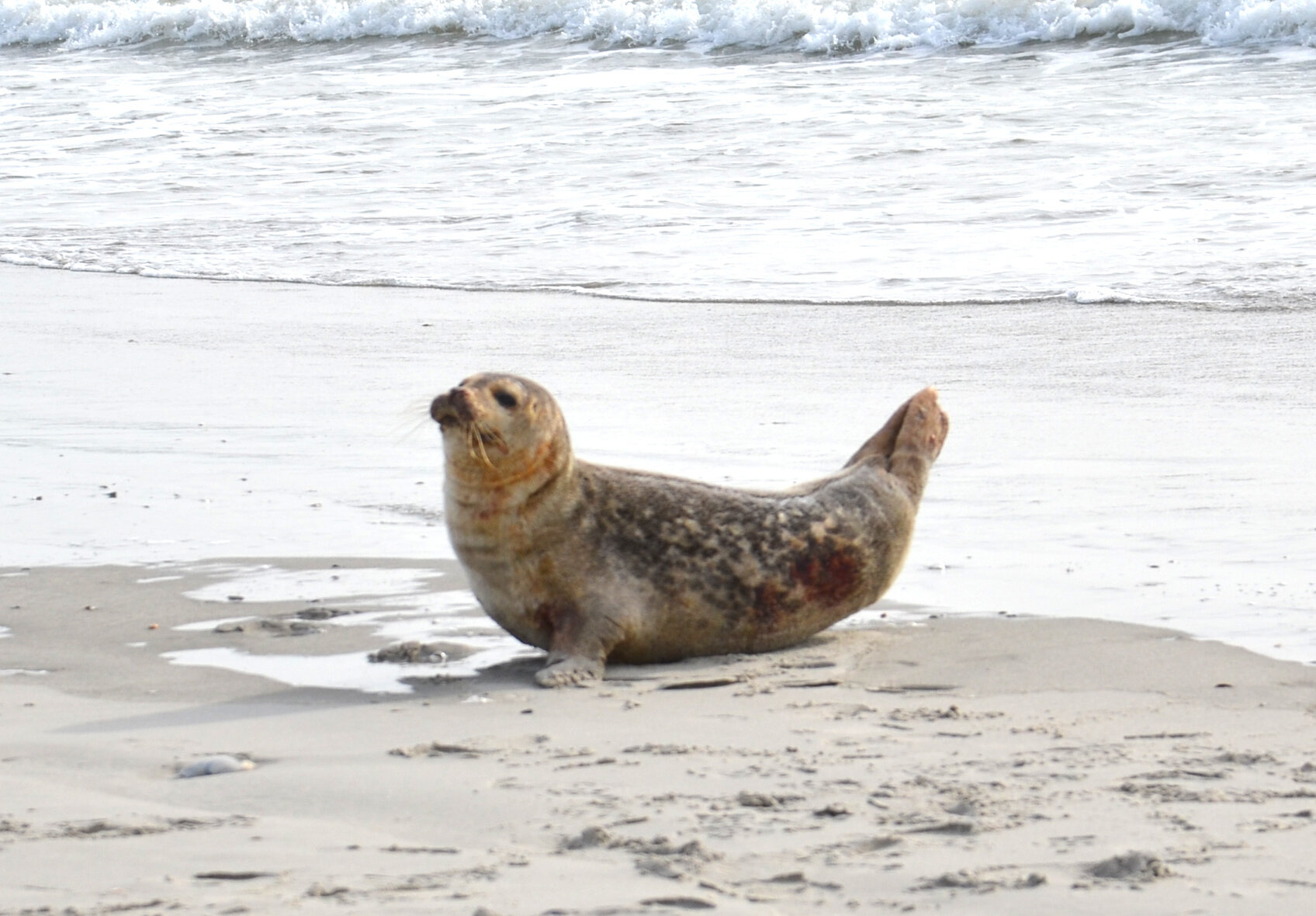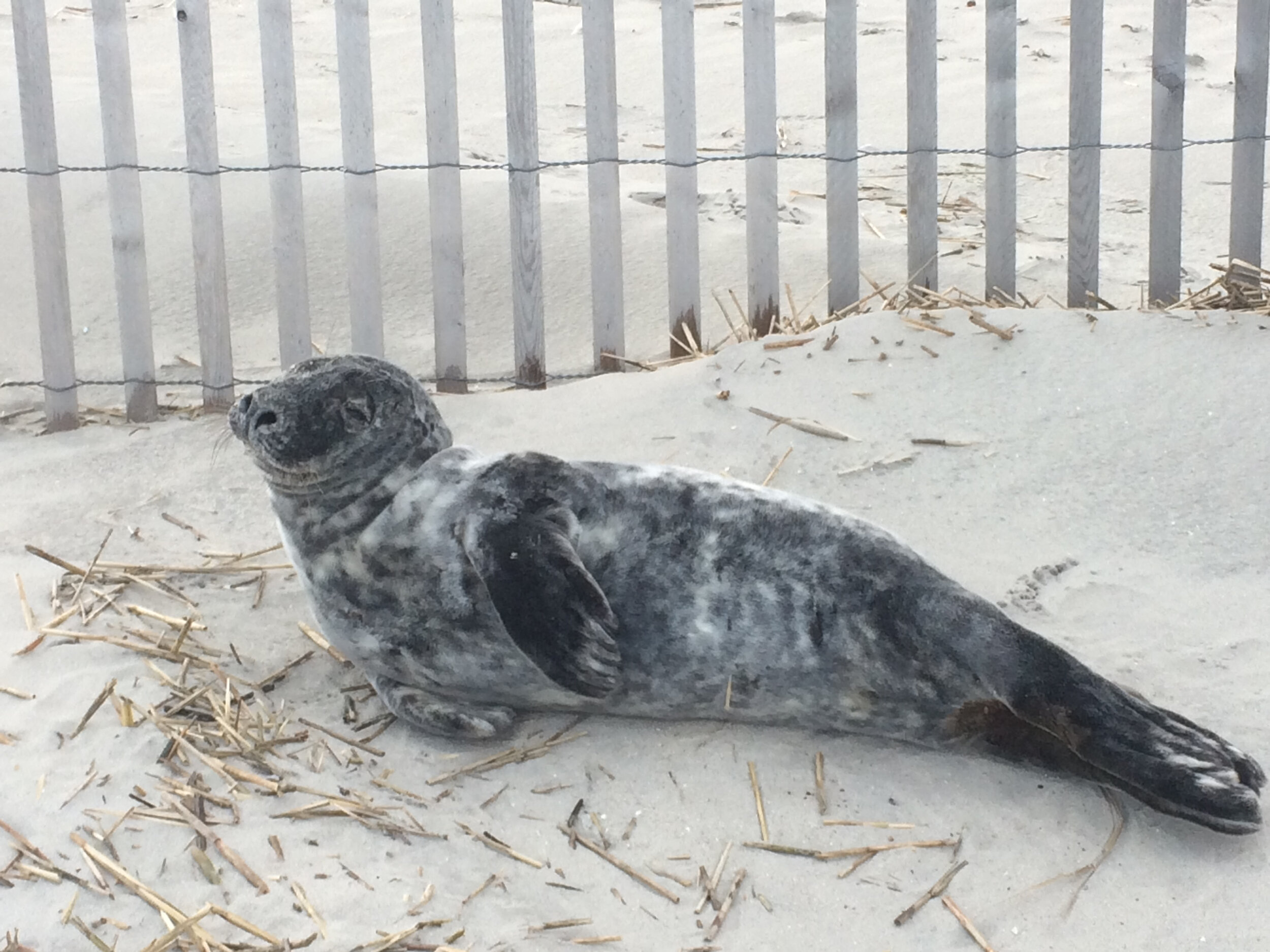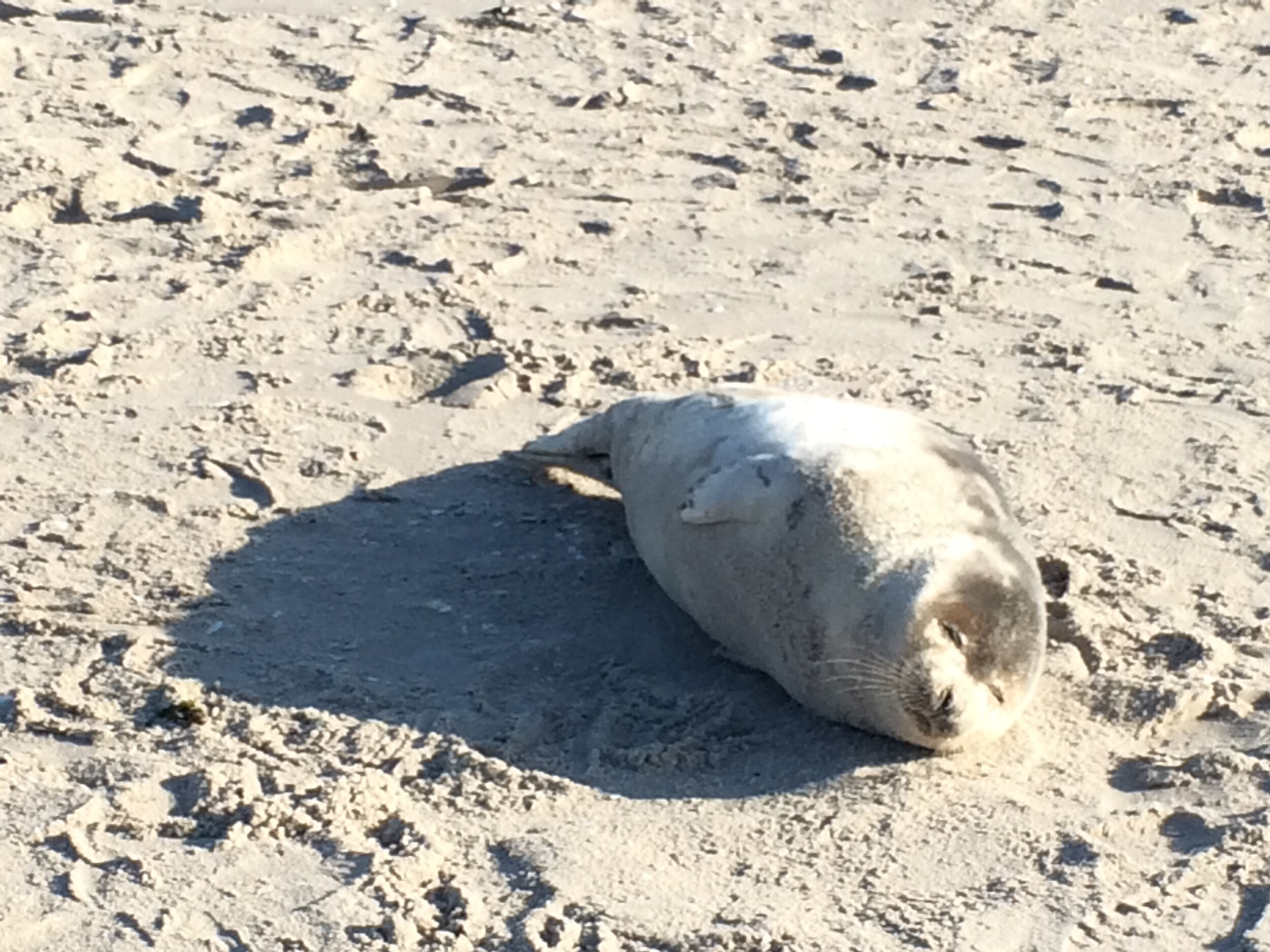If You See a Seal on the Beach…
Harbor seal
Winter in New Jersey is a wonderful time to stroll our beautiful beaches. There is a wildness and energy to the beaches that is absent in the warmer months. The windswept openness of it all is liberating. There is a certain quiet solitude that can be found there. I think for those of us who live here year-round, this is part of the reward. This is also a time when the chances of encountering an unusual visitor to our beaches is highest. I’m talking about seals, and as a trained volunteer with the Marine Mammal Stranding Center, I am frequently asked to respond to seal strandings on our area beaches.
Seals are most often seen on our beaches during the winter months. Most live in the cold waters of the North Atlantic Ocean and move along the coastline during the winter. Most seals spend the majority of the year in feeding and breeding grounds in the north. We rarely see these animals because they are usually well offshore.
There are three species of seals that are most commonly seen in and around our beaches. They are harbor, harp and gray seals. Seals are much better adapted to life in the sea. In general, they come ashore to rest, breed and molt. In our area, however, seals come ashore to rest or when they are injured or sick. The seals we can see in New Jersey are very poor at moving around on land. They use their clawed front flippers to wriggle their bodies across the sand. Thus, they are not very agile and are unable to get away from danger or predators, making them vulnerable when they are out of the water.
Harp seals are found most commonly in the North Atlantic and Arctic oceans. They rely on ice to birth and wean their young. Their young are pure white but molt this coat after only a few weeks. They have a spotted coat most of their lives and their markings can resemble a harp running along their backs. The white-coated pups were prized for their fur and faced heavy hunting pressure. International regulations have put restrictions on this harvest, helping to preserve the species. Adult harp seals can weigh up to 400 pounds and reach 6 feet in length. They are mostly fish eaters, with a life span of 35 years.
Harbor seals are found in New Jersey waters from December through March. Their range extends throughout the waters of the North Atlantic, the Baltic and North Seas. They are commonly seen on rocky islands in Massachusetts, Rhode Island and Maine. They are very curious and enjoy a diet of fish and shrimp. Adult males can be about 6 feet long and weigh 250 pounds and are larger than females that usually only grow up to 5 feet in length. Their average life span is 25 years.
Gray seals are the largest of the seals visiting our area. Males can be up to 8 feet in length and weigh up to 800 pounds. Females are smaller and typically only reach 5 feet and 550 pounds. Their coloring is quite variable with irregular blotches and color patches. They can live to be more than 40 years old. Their diet is more varied as well and includes an assortment of fish, crabs and shrimp.



There are other marine mammals, including dolphins and whales, as well as sea turtles that sometimes also find their way to our shores. Sadly, for many of these animals coming ashore, or stranding, is usually a sign of trouble. Dolphins, whales and sea turtles typically come ashore once they have died and only rarely when they are still alive, and with poor survival chances. Sea turtles sometimes get caught in cold waters and come ashore with cold shock and have better survival chances with these symptoms if they can receive appropriate care quickly. Seals, on the other hand, come ashore when they are injured, but also sometimes just to rest. One way to tell if the animal is resting, is that most seals assume what is called a “banana” position when resting. In this resting position, they arch their bodies and hold their head and tail up off the sand in what definitely looks like the profile of a banana. These resting animals will make their way back to the water on their own and resume their journey. Most stranded seals have good chances of recovery, especially when they can receive help.
The Marine Mammal Stranding Center, located in Brigantine, is the state-permitted and designated rescue and rehabilitation center for marine mammals and sea turtles. It is private, nonprofit organization that rescues, rehabilitates and releases injured marine mammals and sea turtles. Each year, it responds to more than 100 marine mammal and sea turtle strandings. It relies on the public to report strandings, and then a network of volunteers to respond to reported strandings. Volunteers are trained to get information back to the experts at the center and help protect stranded animals until it can dispatch center staff. Center staff will then assess the animal to determine if it should be transported to the center for treatment and hopefully released.
One of the biggest risks that stranded animals face is disturbance from people and dogs that approach them too closely. Marine mammals are protected under several laws and treaties. They are wild animals that must be treated with respect. It is illegal to harass or feed them, and only trained and certified volunteers should approach them. If you see a seal on the beach, you should report it to the Marine Mammal Stranding Center (609-266-0538), being sure to report the exact location of the animal. They will dispatch a volunteer to check on the animal and send information to the staff experts so they can make a determination about the need for treatment. In many cases, the animal is just resting, and the most important thing is that it not be disturbed or approached too closely.
It’s a real treat to see a seal on our beaches – especially when it is an animal that is just enjoying some time in the sun. Do your part: report the animal but keep your distance. If you are interested in becoming a volunteer, contact the Marine Mammal Stranding Center for information.
Native Plants for Sale
May 11-13, 9:30am-4:30pm
On May 11, 12 and 13, The Wetlands Institute will hold its third annual native perennial plant sale. It has selected a beautiful array of plants that will bloom throughout the season and provide all the various food resources that butterflies, songbirds, hummingbirds and other pollinators need to thrive.
Pre-order deadline: May 1 | Pre-order plant pickup: May 11-13 (pickup between 9:30am and 4:30pm Friday, Saturday and Sunday)
For plants and sale information, visit wetlandsinstitute.org/native-plants.
Spring Shorebird and Horseshoe Crab Festival
Saturday and Sunday May 19 and 20, 2018, 9:30-4:30pm
Join The Wetlands Institute for a festival that celebrates the wonders of the shorebird migration and horseshoe crab spawning season that can only be seen right here, in Cape May.
Back-bay kayak tours
Birding and wildlife cruises
Horseshoe crab rescue walks
Guided wildlife viewing
Horseshoe crab aquaculture tours
Guided shorebird viewing walks
and more!
Tickets available for purchase online at wetlandsinstitute.org/SSHC.


